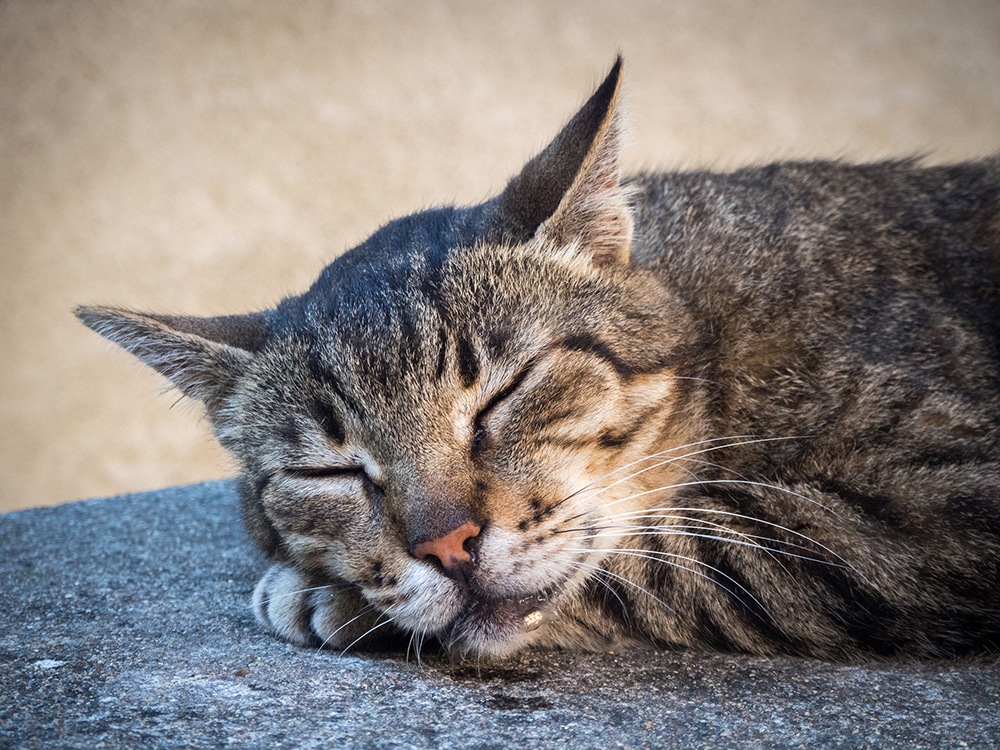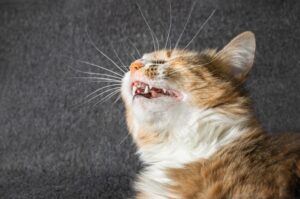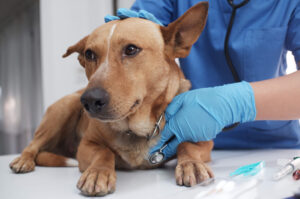Cats, known for their impeccable grooming habits and often aloof demeanor, can sometimes surprise us with behaviors or symptoms that seem out of character. One such instance is when your feline friend starts drooling excessively. While occasional drooling is common in cats, especially during relaxation or purring, excessive drooling could be indicative of underlying issues.
In this article written by the veterinary experts at Loveland Regional Animal Hospital in Loveland, Ohio, we will delve into the causes, concerns, and treatments for excessive drooling in cats.
Understanding Drooling in Cats
Drooling, technically known as ptyalism, is the excessive flow of saliva from the mouth. In cats, occasional mild drooling can be normal, particularly during content purring, or sometimes if they smell something intriguing. However, excessive or sudden-onset drooling may signify that something is amiss.
Common Causes of Excessive Drooling
Dental Issues
One of the most common causes of excessive drooling in cats is dental problems. Periodontal disease, tooth abscesses, or oral injuries can cause pain and discomfort, leading to increased saliva production.
Toxins and Foreign Bodies
Cats are curious creatures, and they might chew on plants or objects that could be toxic. Certain houseplants are toxic to cats and can cause drooling if ingested. Similarly, if a foreign object gets stuck in a cat’s teeth or throat, it may cause discomfort and drooling.
Upper Respiratory Infections
Upper respiratory infections can also cause excessive drooling in cats. When a cat has a respiratory infection, it might experience nasal congestion and discharge, making it difficult to breathe through the nose. Consequently, the cat may breathe through its mouth, leading to drooling. These infections can be caused by viruses or bacteria and require prompt attention from a vet.
Nausea and Gastrointestinal Issues
Cats might drool when they are nauseous. This can be due to various gastrointestinal issues, including hairballs, infections, or changes in diet.
Medication or Chemicals
Reactions to certain medications or chemicals, especially if the cat comes into contact with insecticides or household cleaners, can lead to drooling.
Heat Stroke
Heatstroke is another cause for excessive drooling in cats. During hot weather, if a cat is exposed to high temperatures without proper ventilation or water, it may suffer from heatstroke. The cat may pant and drool excessively as it tries to cool itself down. It’s crucial to keep your cat in a well-ventilated area with access to fresh water, especially during hot weather.
Stress and Anxiety
Yes, cats can get stressed too! Anxiety or stress, often a result of changes in the environment, can sometimes cause excessive drooling in cats.
Diagnosing the Cause
If your cat is drooling excessively, it’s essential to diagnose the underlying cause. Observing any accompanying symptoms such as bad breath, difficulty eating, vomiting, or lethargy can give clues. However, consulting a veterinarian is imperative for a proper diagnosis.
Your vet may perform a physical examination, with a focus on the oral cavity. They may also ask about your cat’s recent behavior, diet, and environment. Further diagnostic tests like blood work or X-rays might be necessary, depending on the preliminary findings.
Monitoring and Care at Home
While the vet plays a significant role in diagnosing and treating causes of excessive drooling, monitoring and care at home are equally important. Pay attention to your cat’s behavior, eating habits, and interaction with the environment. If you notice any changes, it’s essential to document them as this information can be helpful for the vet.
Additionally, you can take steps to ensure your cat’s mouth and surrounding areas are clean. Gently wiping your cat’s mouth with a damp cloth can help keep the area dry and prevent skin infections.
Treatment Options
The treatment options for excessive drooling in cats vary depending on the underlying cause.
If the drooling is a result of dental issues, your veterinarian may suggest dental cleaning, tooth extraction, or medications to address infections or alleviate pain. In cases where foreign bodies or toxins are involved, it may be necessary to remove the foreign object or administer medications to counteract the toxins. Gastrointestinal issues can be managed through dietary changes, medications, or supplements recommended by your vet.
Long-term Management and Follow-up
Depending on the cause of the excessive drooling, long-term management may be necessary. For instance, if your cat is diagnosed with a chronic dental issue, regular dental cleanings and check-ups will be vital. Similarly, if your cat is prone to anxiety, you might need to employ long-term strategies such as behavioral therapy or medication to manage the condition.
In any case, follow-up appointments with the veterinarian are essential to monitor your cat’s progress and make any necessary adjustments to the treatment plan.
Conclusion
Excessive drooling in cats is not something to be ignored. Understanding the potential causes and seeking timely veterinary assistance can ensure that your cat gets the appropriate care and treatment. Being proactive in managing your cat’s health, environment, and stress levels can help prevent excessive drooling and keep your feline friend happy and healthy. Remember, a purring cat is a joy to have around, but it’s our responsibility to notice when their purr might be signaling something more.
Is your cat exhibiting excessive drooling in or around Loveland, Ohio? Our veterinary staff at Loveland Regional Animal Hospital is standing by, ready to assist you and your furry friend. Give us a call today or book an appointment online!





